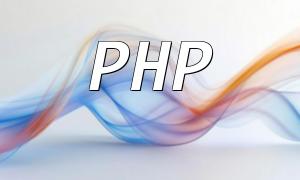PHP, a powerful programming language, is widely used in web development, particularly in video processing. As video effects and filter processing technology evolves, many websites are leveraging these techniques to improve user experience. This article will focus on how to use PHP with the FFmpeg extension to implement video effects and filter processing, and share some common implementation methods.
To implement video effects in PHP, you need to first install the FFmpeg extension. With the FFmpeg extension, PHP can directly call FFmpeg commands for video processing. The installation process is as follows:
Once installed, you can use FFmpeg-related functions in your PHP code to process video effects.
Here is a simple example demonstrating how to use the FFmpeg function in PHP to apply video effects:
$inputFile = 'input.mp4';
$outputFile = 'output.mp4';
$command = "ffmpeg -i $inputFile -vf 'vintage' $outputFile";
exec($command);
In the example above, we use the FFmpeg "-vf" parameter to apply the "vintage" effect. After running this command, the input video will be transformed with a retro effect and saved as "output.mp4".
Besides the "vintage" effect, FFmpeg also supports a variety of other video effects such as "sepia" (brownish effect), "blur" (blurring effect), and "negate" (inverted color effect). Simply adjust the "-vf" parameter to apply different video effects.
In addition to video effects, FFmpeg also allows you to apply filters to modify the video's properties like color and brightness. Here's an example of using a filter:
$inputFile = 'input.mp4';
$outputFile = 'output.mp4';
$command = "ffmpeg -i $inputFile -vf 'lutrgb=r=negval:g=negval:b=negval' $outputFile";
exec($command);
In this example, we used the "lutrgb" filter to invert the color values of the video. After executing this command, the video's colors will be inverted and saved as the output file.
Besides the "lutrgb" filter, FFmpeg also provides other common filters like "blur", "drawtext" (draw text on video), and "flip" (flip video). You can modify the "-vf" parameter to apply different filters.
In addition to using FFmpeg functions for video effects and filters, PHP also supports other video processing methods:
This article introduced how to use the FFmpeg extension in PHP for video effects and filter processing. By combining FFmpeg functions, PHP makes it easy to process video effects, filters, and other video editing tasks. Additionally, we also mentioned other video processing methods such as using the GD library, FFmpeg library, and Canvas. We hope these insights help you better understand PHP's video processing capabilities and enhance your website's video functionalities.










